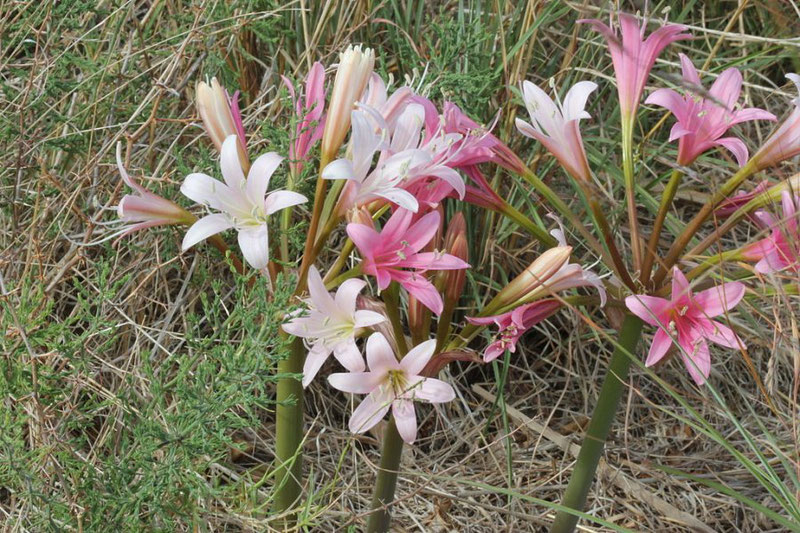Ammocharis longifolia
 Image: Jon Richfield
Image: Jon Richfield
Description
The name Malgas lily is taken from the abundance of this bulb in the Malgas area near the Breede River in the Cape. It is one of South Africa's showiest bulb species especially when seen flowering en masse.The plants are deciduous and grow in winter. The leaves appear from May and die back from October when the plants normally come into flower. They have a cut-off appearance at the tips.
Plants grow on sandy to gravelly flats, often close to permanent or seasonal streams and rivers. Being deciduous geophytes, they are able to withstand seasonal droughts and very low temperatures in the winter.
The fragrant, lily-like flowers are borne on short stalks close to the ground and are almost certainly pollinated by moths at night when the scent is released. The protruding stamens facilitate pollination when the insects enter and exit flowers. After pollination, the flowers soon wither. The fruit has a papery covering that ruptures as the dry inflorescence is blown by the wind in a tumbling fashion to aid seed dispersal.
Propagation instructions - cuttings
It is also possible to separate bulbs from mature plants that multiply under the ground. Another method of propagation is to cut away a small section of the bulb base where the roots form and plant this in a coarse medium. Bulblets should appear at the base within a few months. This must be done in the vegetative stage of the plant i.e. just before the leaves appear in winter.
Propagation instructions - seeds
The plants can be grown from seed, which should be sown as soon as possible once ripe. The seeds of Ammocharis species sometimes start to germinate even before they fall. A coarse medium, such as river sand, is ideal and seedlings must be kept moist.
Sources and references
Scientific name
Ammocharis longifolia
Common name(s)
Malgas lily
